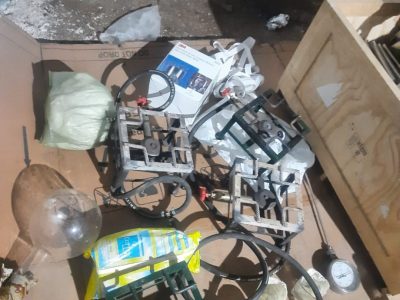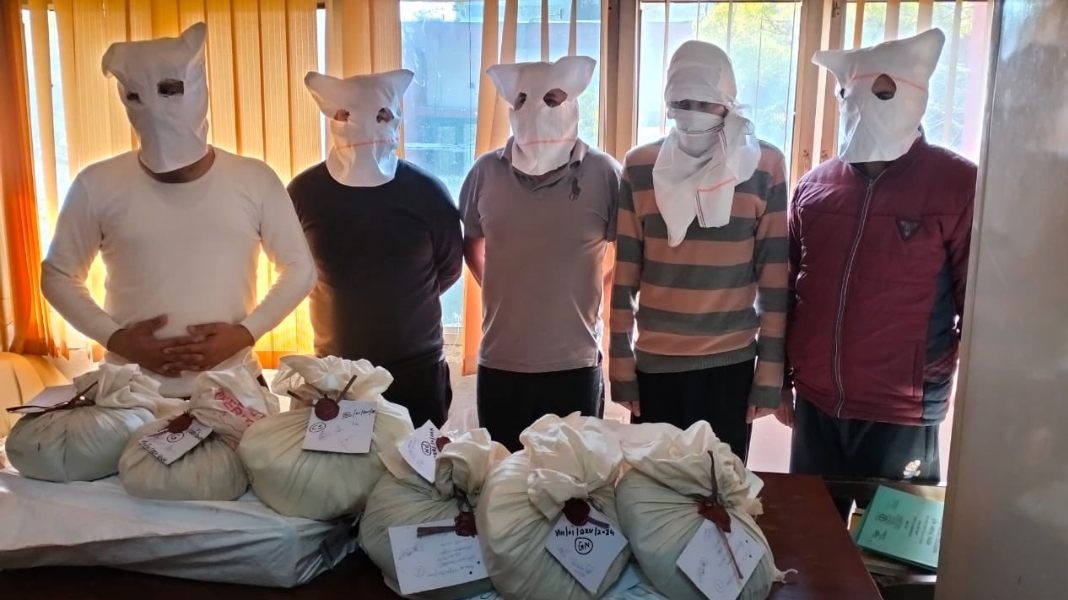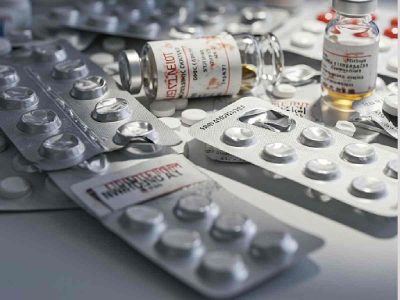As the month of April arrived, Delhi Police unravelled a sinister plot involving two alleged residents of Myanmar and T-Meth (methamphetamine drug kept in a sachet of tea). A kilogramme of the drug was recovered from the duo identified as Lalmuankimi and her aide, Laldinmawia.
However, this was not a one-off instance. To put matters into perspective, since January, over 600 grams of fine methamphetamine has been recovered from Dwarka’s Uttam Nagar area itself. However, according to Delhi Police officials, the national capital is not the destination for the drugs that are manufactured or seized here.
“Delhi is not the destination for these drugs. It goes to other states from here, almost covering the whole of India. Here, the drugs are sold mostly in low quantities since the clients themselves are fairly small time [consumers],” said a senior police official closely linked with the Delhi Police’s Narcotics Cell.
The national capital’s drug repository is now witnessing a spurt of recreational drugs, which was still kept off the counter for the general populace owing to its fairly low demand locally. However, in recent years, seizures of over 500 kg have become almost commonplace. Although the usual suspects of ganja, heroin and cocaine remain the bigger players in the market, aggravated seizures of meth point towards its growing popularity.
Dwarka Police had seized 445 grams of fine methamphetamine, 1 kg of pseudoephedrine and 20.35 kg of raw materials used in the manufacturing of crystal meth, alongside laboratory apparatus from an apartment at Uttam Nagar, in January.

On the other hand, in March, the Dwarka Narcotics Cell team, sealed another meth lab operating from North Delhi’s Burari which was being run by foreign nationals, seizing 129 grams of fine methamphetamine and 78.6 kilogrammes of raw materials.
Amit Goel, Crime Branch’s Deputy Commissioner of Police, highlighted methamphetamine’s growing popularity among the youth.
“Meth has become more widespread and easily available now than it was before. College students and a lot of other young people have also taken to purchasing these from peddlers in small quantities to get their fix,” he said.
Meth cooking, although profitable, comes with myriad downsides, specifically owing to the hazardous process that goes behind the manufacturing of it. In February, an apartment in North Delhi’s Burari burst into flames resulting in the death of two Nigerian nationals inside. It was uncovered by the police later in March that the explosion had been caused by the noxious fumes and the hazards that came into play with the cooking of meth inside closed spaces.
“Meth cooks here in Delhi mostly use apartment spaces and empty rooms inside these flats to set up their labs. However, meth cooking in itself is prone to combustion inside such tight spaces, since the fumes get stuck inside and owing to a lack of space to escape, they burst. More prominently, it is through the use of pseudoephedrine in the process that it gets much more dangerous,” said Assistant Commissioner of Police (ACP), Crime Branch, Umesh Barthwal.
According to the ACP, the cooks get their share of pseudoephedrine from multiple black markets since “only three (pharmaceutical) companies can manufacture it”.
The drug is listed as a controlled substance in the pharma market. Medically prescribed for nasal decongestion in small doses, pseudoephedrine has the potential to act as an eugeroic, or a wakefulness-promoting agent, in higher quantities. That makes it the perfect ingredient in the manufacture of methamphetamine.
“These black marketeers procure the pseudoephedrine from the source itself through multiple back channels. Assuming that they procure around 1,000 of these strips, they forge government stamps giving them a false seal of approval and then hide these inside a flour dough. After that, they throw these inside the river (Yamuna) for the cooks and peddlers to collect,” said Barthwal.
According to experts, the substance in itself is not flammable but in enclosed spaces, pseudoephedrine dust during crystallisation can combust when kept in close proximity with ignition sources, such as nitrates and other oxidising agents. Moreover, any activity with the said substance must be done outdoors or in wide spaces to prevent lethal blasts.
Despite the hazards associated with its cooking, the market for methamphetamine keeps increasing, especially among the younger crowd. “It gives the high of cocaine without the hefty price tag. Sometimes, the peddlers themselves sell meth as cocaine, and only give you the latter if you ask for the ‘purer stuff’,” the ACP disclosed.
Considering the market, meth is going for upwards of Rs 5,000 for a gram while cocaine goes for Rs 9,000 for a gram, according to Barthwal.
On the other hand, heroin and ganja remain the most seized drugs under the Narcotic Drugs and Psychotropic Substances (NDPS) Act, maintaining their dominance in the market owing to easier accessibility, according to DCP Goel.
Earlier in December 2023, the Narcotics Cell had seized a cumulative 500 kg of multiple psychotropic drugs such as marijuana, mushrooms and LSD in a single operation from a duo of peddlers in Dwarka as said by a senior official.
“Places such as North Delhi, Dwarka, and Greater Noida have become the hub for meth manufacturing in the Delhi-NCR owing to a higher population of foreign nationals there,” added Barthwal.
Another senior official with the Narcotics Cell disclosed that hotspots for heroin procurement are found across Delhi, specifically in South and South East districts.
How many meth seizures have happened this year?
- January: 445 grams of crystal meth, 1 kg of pseudoephedrine and 20 kg of raw materials in Greater Noida
- March: 129 grams of crystal meth and 78.6 kg of raw materials at Uttam Nagar
- April: 1 kg of meth tea bags procured at Uttam Nagar
What is Delhi getting high on?
- Ganja/Charas
- Heroin
- Mushrooms
- Cocaine
- Psychedelics
Newest addition
Methamphetamine
What makes meth cooking in labs so prone to blasts?
- Usage of pseudoephedrine
- Pseudoephedrine dust tends to combust when kept near oxidising agents
- The labs are constructed inside cramped apartment rooms, making it difficult for the fumes to escape
- Lack of safety measures





